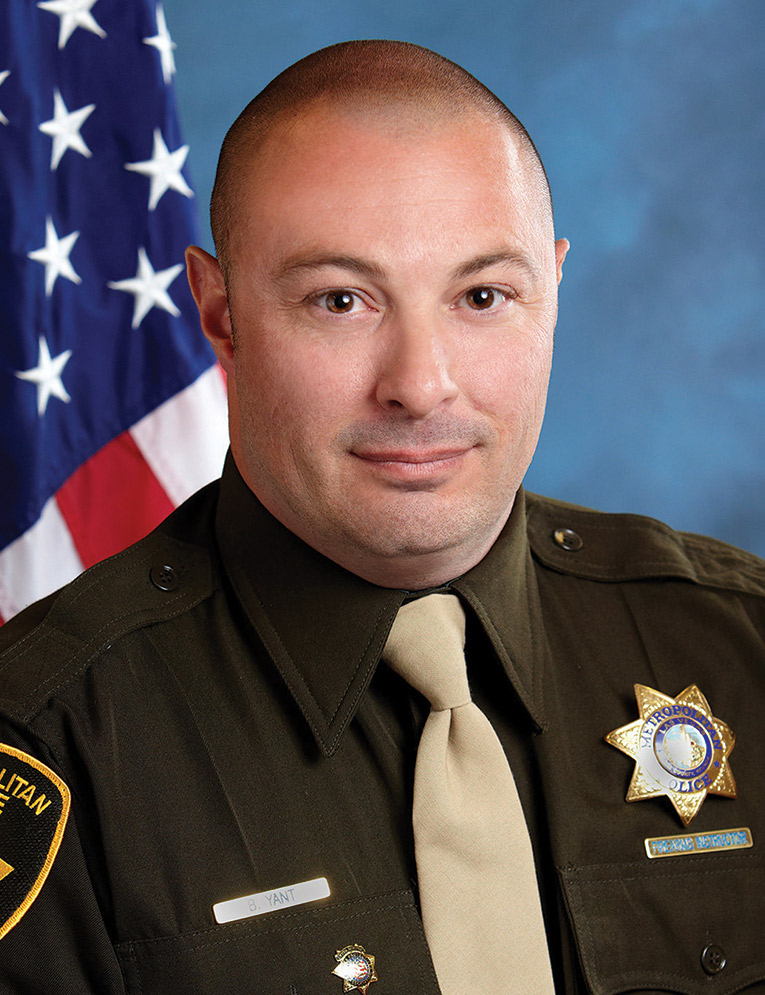
Sergeant-at-Arms
As a major law enforcement agency, we are very well-trained compared to other agencies across the country. We are mandated by Nevada POST to receive new training, as well as recertification training annually. On top of that training — whether it be live in-service classroom training, reality-based scenario training, range training or UMLV computer-based training — officers can choose from a wide variety of career-enhancing and career-advancing classes.
As I have traveled throughout the country attending meetings and seminars, I can tell you that, hands down, our agency has some of the best and most training available to officers. The downside to that is far too often, training is canceled for squads for various reasons. This ugly issue has been addressed over and over with captains on up, and it continues to be a problem with squad training days being canceled. If your individual or squad-level training is canceled, please notify us so we can ensure the cancellation meets the criteria established or not. Please see Dan Coyne’s article on training days and the discussion with LVMPD staff by visiting tinyurl.com/5n7r7c9m.
When I say you may be lacking in training and skills, I absolutely do not mean our men and women who dedicate their time to the training section are faulty. They work tirelessly, trying to provide the men and women of this agency with the best training they can. They constantly strive to reinvent training scenarios and keep lesson plans fresh so the lessons learned from training translate into blueprints for success in your day-to-day work.
I have written in the past about the importance of articulation and explaining your “why” as it relates to your application of force and justification for force used. Articulation is an area where we see officers struggle. From a simple use-of-force report in Blue Team to report writing and, most importantly, in CIRT interviews, officers struggle with articulation. Far too often, officers use non-elaborate descriptions, such as the subject was “aggressive,” “resisted” or “I feared for my life.” These terms may all be key words, however, they do not paint a clear picture of the subject’s actions. The subject’s actions need to be clearly defined by what they did, said and how you felt and perceived their actions. Your articulation should allow the reviewer of facts to close their eyes after reading or hearing your account of the event and see a clearly
painted picture.
The area I believe officers may need additional training and practice is in articulation post-realistic scenario-based training and debriefing post-events in the field. This practice provides squads and officers with the ability to articulate applications of force, threat analysis and Graham v Connor factors. Squads and individual officers will benefit from the ability to practice articulation after elevated stress and heart rates simulating real-world events in the field, as well as after squad-level responses to high-risk calls for service.
Supervisors, informal leaders and trainers can start focusing efforts on these areas post-training scenarios and events. The training and practice on articulation will drastically help officers while writing Blue Team reports and during IAB and CIRT interviews. Some areas of focus should be:
- Information sharing: What information did the officer receive via dispatch, CAD, and other officers either en route or at the scene?
- Tactical assessment: What tactics based on the information received were considered, and what threat assessment/analysis was considered?
- Pre-planning: What mental rehearsal, or if with a partner riding double or via the radio, did officers plan and coordinate a response based on the information provided?
- De-escalation: What steps, including the pre-planning, did you or other officers take to slow the momentum, gather resources,
employ less lethal options, request K-9 and air units, request supervision, etc.? - Officers approach/cover and concealment: How did the officer(s) arrive at the call? Did they arrive properly and safely, and did they use cover and concealment on the approach?
- Principles of contact and cover: Did officers use contact and cover methods on the call and while contacting parties involved? Did roles stay consistent through the event or change based on the dynamics of the situation presented, and were the roles established and communicated?
- Use of force/deadly force: Ability, opportunity, jeopardy; ability, opportunity imminent jeopardy, preclusion.
- Threat assessment: Severity of crime at issue; whether the subject poses an immediate threat to officers or others; whether the subject is actively resisting arrest; the influence of drugs, alcohol or mental capacity of the subject; availability of officers or resources to de-escalate the situation; time for an officer to make a decision to use force; the proximity or access to weapons for the subject; and environmental factors influencing the application of force.
- Decision to use force: A synopsis of what the officer responded to that led to the decision to use force.
- Medical response/intervention: Was medical requested, and what steps, if any, did officers take to provide basic medical care for
the subject? - Assessment of equipment, firearms, ammunition and qualification: An administrative review of the above listed items.
Now, if you have ever been through the CIRT process, you will notice these topics are always listed on the notice for both subject and witness officers. If trainers, supervisors and informal leaders implement these topics and practice evaluations during debriefs, individual officers and squads can experience real-life articulation practice under stress and benefit from peer reviews of their articulation skills and build upon the reviews.
As always, we thank you for your membership. If you ever need assistance with training, help with a Blue Team report or anything at all, we are always available 24/7! Please don’t hesitate to call us. Thank you.

